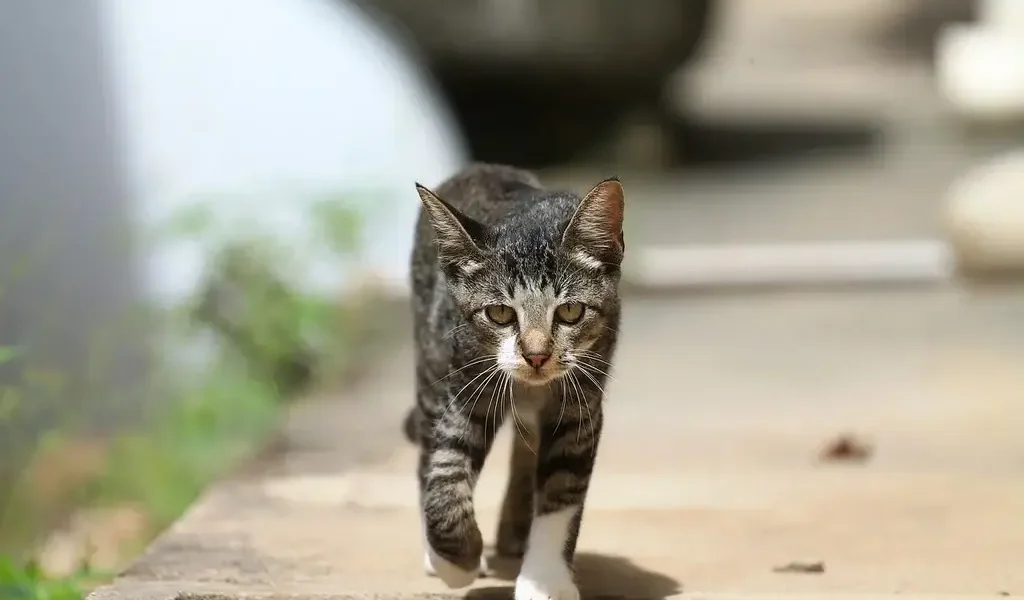The Best Flea Treatment for Cats: A Comprehensive Guide
Introduction
It’s a nightmare scenario – your cat is scratching more than usual. Upon closer inspection, you see fleas hopping through your cat’s fur and all over your furniture and carpets. A flea infestation! How did this happen, and more importantly, how do you quickly eliminate these unwelcome pests? Discovering the best flea treatment for cats ensures their comfort and health. Effective flea control starts with choosing the best flea treatment for cats.
More than simply an annoyance, fleas can also lead to health issues and a sad cat. The key to protecting your feline friend is using fast-acting, vet-recommended flea control products. With so many options on the market, it can take time to determine what works best for cats.
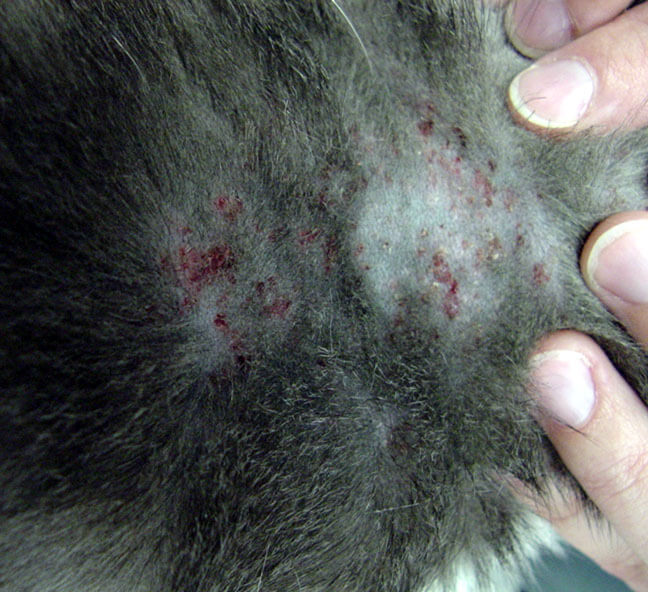
This article will cover everything you need about fleas and your cat. You’ll learn how to identify a flea problem, explore different treatment options, and discover the safest, most effective flea control products recommended for cats. We’ll also provide tips for keeping fleas away from your furry friend. Trusting the best flea treatment for cats can alleviate both your cat’s discomfort and your worries.
Arm yourself with knowledge and fight back against fleas! By the end, you’ll be ready to choose the right flea treatments to banish the bites and irritation in your cat’s life once and for all. The fleas won’t stand a chance. Let’s get started!
Understanding Fleas
Fleas are tiny, wingless, blood-sucking parasites that can infest our feline friends and make their lives miserable. To understand how to eliminate fleas, you must first understand the flea life cycle and behavior. Stay proactive in protecting your furry friend by using only the best flea treatment for cats on the market.
The Flea Life Cycle
Fleas go through four distinct life stages:
- Eggs – Adult fleas lay tiny white eggs in the cat’s fur. Eggs fall off into carpets, bedding, etc.
- Larvae – Eggs hatch into worm-like larvae in about two days. Larvae feed on organic matter and mature in 1-2 weeks.
- Pupae – Larvae form cocoons and enter the pupae stage. They can remain dormant in cocoons for weeks up to a year.
- Adults – Pupae emerge as adult fleas, immediately jumping onto pets to feed on blood. The cycle repeats itself.
Here’s a simple breakdown:
| Stage | Description |
| Egg | Tiny pearl-white eggs laid by adults |
| Larvae | Worm-like, feeds on organic matter |
| Pupa | Spins a protective cocoon |
| Adult | Emerges and jumps on pets to provide |
How Fleas Infest Cats
Adult fleas living on an infected cat will lay 20-50 eggs daily. These eggs fall off the cat into carpets, bedding, furniture, etc., where they hatch into larvae. Researching the best flea treatment for cats enables pet owners to make knowledgeable decisions for their feline companions. The health of your feline companion depends on selecting the best flea treatment for cats available.
Larvae mature into pupae while hidden deep in fibers. When ready, pupae emerge as hungry adult fleas that immediately hop onto pets. In her lifespan, a single mother flea can give birth to thousands of babies in this manner.
This is why flea infestations spread rapidly and can be hard to control. The flea life cycle allows eggs and pupae to accumulate undetected in the home and environment until they become pesky adults.
Problems Caused by Fleas
Fleas aren’t just a nuisance. They can cause the following health issues:
- Skin irritation – Flea bites trigger severe itching, red bumps, rashes, and hair loss.
- Infections – Flea bites can allow bacteria to enter the skin and cause infections.
- Anemia – Heavier infestations drain enough blood to make cats anemic.
- Tapeworms – Swallowed fleas transmit tapeworm eggs that mature in the digestive tract.
The best way to prevent these issues is through prompt flea control. Learn about the life cycle of fleas and be on the lookout for any indications of an infestation. Tailoring the best flea treatment for cats involves considering factors like age, breed, and lifestyle.
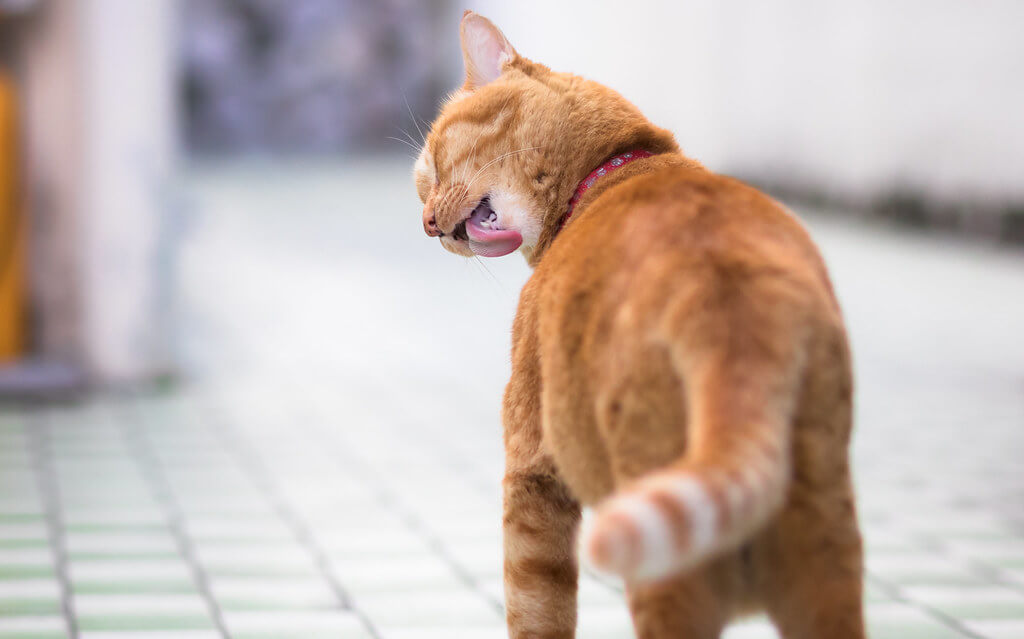
Signs Your Cat Has Fleas
Have those pesky parasites taken up residence on your cat? Look for these common signs of a flea infestation:
Itching and Scratching
Excessive scratching and fur licking are apparent, and signs of fleas are present. The bites cause severe skin irritation that your cat tries to relieve. You may see them nibbling or scratching at the base of their tail or hindquarters. The best flea treatment for cats prevents discomfort and potential health issues.
Cats can scratch so much they damage their skin, leading to:
- Rashes
- Scabs
- Bald patches
- Hot spots
Flea Dirt
Flea dirt refers to flea poop that accumulates in your cat’s fur. It’s made up of digested blood and looks like tiny black specks.
You’ll often see flea dirt in the groin area, tail, neck, or belly. Use a fine-toothed flea comb to search for it near the skin. Place any specks you find on a damp paper towel – flea dirt will leave a reddish stain. Trustworthy reviews can guide you in selecting the best flea treatment for cats tailored to your pet’s needs.
Tapeworm Segments
If your cat swallows infected fleas while grooming, they can contract tapeworms. These intestinal parasites shed segments that are passed in the stool. Effective prevention is key when seeking the best flea treatment for cats in your care.
Tapeworm segments look like tiny white grains of rice. They may stick to the fur around your cat’s hindquarters, or you’ll find them in the litter box. Providing the best flea treatment for cats is crucial for maintaining a happy and healthy household.
Loss of Fur
The irritation of flea bites prompts cats to pull out their fur through overgrooming. You may notice thinning fur or bald patches, especially at the base of the tail or hind legs. By prioritizing the best flea treatment for cats, you’re investing in their overall wellness and happiness.
Pale Gums
In severe infestations, fleas can drain enough blood to make your cat anemic. Check your cat’s gums – pale or white gums point to anemia from flea bites. Opting for the best flea treatment for cats proves your dedication to their health and well-being.
Seeing Fleas
Parting the fur near the skin on the hindquarters, belly, or neck may reveal live fleas. Fleas are extremely fast and tough to spot. You may need a flea comb to capture some. Discovering the best flea treatment for cats ensures your furry friend’s comfort and well-being.
Be sure to see fleas crawling on your cat before you see fleas crawling on your cat. Immediately address any signs of scratching, flea dirt, hair loss, etc. A vet exam can also check for and treat flea-related conditions. The sooner you treat, the faster your cat will feel relief! Ensuring you have the best flea treatment for cats on hand is crucial for maintaining a peaceful home environment.
Types of Best Flea Treatment for Cats
If you’ve discovered fleas on your feline friend, you’ll want to employ some treatment promptly. There are many effective options for eliminating fleas and providing ongoing prevention. Here are the main categories of flea control products for cats:
Oral Medications
Oral flea prevention involves giving your cat a pill or chewable tablet once a month. These are prescription medications that contain powerful insecticides to kill fleas fast:
Nexgard – As a beef-flavored chewable, Nexgard contains afoxolaner. It kills mature fleas before they can lay eggs and begins to act within thirty minutes. Nexgard is over 99% effective and safe for kittens eight weeks and older.
Comfortis – These pills contain spinosad, which begins working in 30 minutes to kill fleas and prevent infestations for a month. Comfortis is FDA-approved for cats 14 weeks and older.
Bravecto – Bravecto chews work for 12 weeks to kill fleas and ticks. The tablets contain fluralaner as the active ingredient. Bravecto is safe for kittens at least six months old. With the best flea treatment for cats, you can safeguard your beloved pet from discomfort and irritation.
Pros
- Starts killing fleas rapidly
- Convenient oral dosage
- Usually given just once a month
- Easy to give mixed-in food
Cons
- Prescription-only, more expensive
- Some cats dislike the taste
- Missing a dose reduces effectiveness
- Adding to food can lead to accidental overdose
Topical Treatments
These popular flea prevention products come as liquid drops applied to your cat’s skin on the neck or shoulders:
Frontline Plus – Fipronil and (S)-methoprene, the active components, kill fleas and ticks in all stages. It’s waterproof, fast-acting, and remains effective for a month. Frontline Plus can be used on kittens eight weeks and older.
Advantage II – Advantage II contains imidacloprid and pyriproxyfen to kill fleas and lice. It starts working within 12 hours. One dose protects cats for one month. It is approved for seven-week and older kittens.
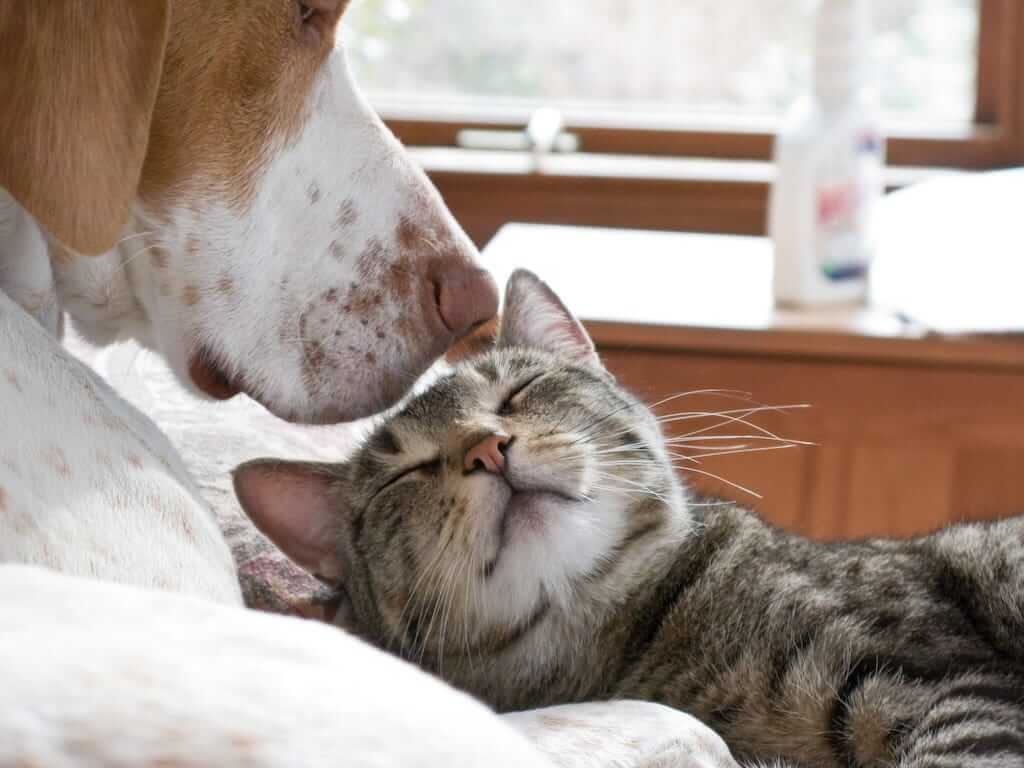
Revolution Plus is a monthly topical that kills fleas and ticks while preventing heartworm infections, roundworms, and hookworms. The active ingredients are selamectin, stroller, and pyriproxyfen. Revolution Plus can be safely used on cats eight weeks and older. Providing the best flea treatment for cats guarantees a happy and itch-free existence for your pet.
Pros
- Rapidly kills fleas and ticks
- Easy one-step application each month
- Waterproof, long-lasting protection
- Often cheaper than oral medications
Cons
- Could cause skin irritation in rare cases
- Cats may dislike the application
- Monthly reapplication is essential
Flea Collars
Selecting the best flea treatment for cats is crucial because your pet’s health is very important. Flea collars like Seresto and Hartz Ultraguard provide ongoing flea and tick prevention by continuously releasing insecticides from the collar. They can work for several months:
- Seresto – Lasts for eight months. Kills and repels fleas and ticks. The non-greasy formula is water resistant. Safe for kittens over ten weeks old.
- Hartz Ultraguard – Provides seven months of flea and tick protection. It kills all stages of fleas and repels reinfestation for kittens and cats older than 12 weeks.
Pros
- Convenient – works continuously without monthly application
- Effective for several months
- Low maintenance option
Cons
- Some cats dislike wearing collars
- Could cause skin irritation in some cats
- Costly to replace every 6-8 months
- Won’t kill existing infestations as rapidly as other treatments
Flea Sprays and Shampoos
Over-the-counter topical flea control products can help kill live fleas on your cat and provide quick but temporary relief in between other treatments:
- Adams Plus Flea & Tick Spray – Kills fleas, ticks, and lice on contact for up to 28 days. Water-based and safe for use on kittens 12 weeks and older.
- Vet’s Best Natural Flea + Tick Home Spray – Plant-based ingredients kill and repel fleas, ticks, and mosquitoes for up to 30 days. Safe around cats.
- Sentry Flea and Tick Shampoo – Kills fleas and ticks on contact while bathing your cat. Contains soothing oatmeal.
Pros
- Kill live fleas quickly
- Useful for immediate relief before other treatments start working
- Affordable short-term options
Cons
- Don’t provide lasting, long-term prevention
- Could irritate skin if overused
- Require bathing cat, which they may dislike
Flea Combs
Flea combs can effectively remove live fleas, eggs, and flea dirt from your cat’s coat during grooming. Models with fine teeth allow you to comb right down to the skin and catch fleas. Choosing the best flea treatment for cats demonstrates your commitment to their welfare. Discovering the best flea treatment for cats ensures your feline’s comfort and health.
Pros
- Inexpensive
- Natural removal of live fleas
- Satisfying to see fleas removed
- Can be used often for quick checks
Cons
- Won’t kill or repel fleas long-term
- It is consuming to comb the cat’s coat fully
- Easy to miss spots and allow fleas to escape
Natural Remedies
Some pet owners seek more natural alternatives like essential oils, yeast supplements, herbal sprays, etc. However, clinical studies proving their effectiveness and safety are often lacking:
- Essential oils – Oils like cedarwood, lemon eucalyptus, and peppermint are touted as repellents, but they don’t kill fleas already on your cat.
- Yeast supplements – Brewer’s yeast and garlic are thought to make cat’s blood unappealing to fleas when ingested. The evidence is anecdotal.
- Diatomaceous earth – The sharp edges of this powder can damage fleas, but it must stay dry to work and can irritate the lungs.
Pros
- Avoid chemicals and pesticides
- Often inexpensive
- Can be used alongside other treatments
Cons
- Limited clinical evidence on efficacy
- Results are inconsistent
- Risk of skin irritation or toxicity
Discuss natural options with your vet first, and view them as complementary to proven modern treatments, not replacements. The most important thing is ensuring your cat’s comfort, safety, and health. The best flea treatment for cats not only eliminates pests but also promotes their overall wellness.
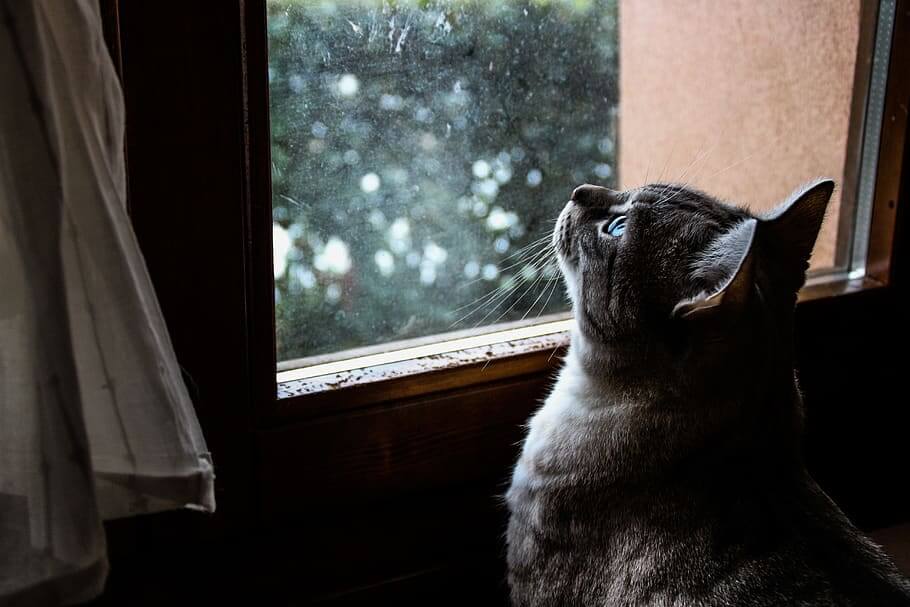
The Best Flea Treatment for Cats
With all the flea products on the market, how do you know which are indeed the best and most effective for cats? Based on effectiveness, safety, and veterinarian recommendations, here are the top picks in each category:
Best Overall: Frontline Plus
Frontline Plus is a popular, topical flea and tick treatment veterinarians widely recommend as safe and highly effective. The active ingredients fipronil and (S)-methoprene work together to kill all life stages of fleas and ticks.
How it Works
- Fipronil kills adult fleas and ticks
- (S)-methoprene kills eggs and larvae
- Repels and prevents reinfestation
A single application provides fast-acting, month-long protection. Frontline Plus starts working within 12 hours and kills nearly 100% of fleas within 24 hours. Since it’s waterproof, baths and swimming won’t affect efficacy.
Frontline Plus is approved for use on kittens as young as eight weeks old weighing at least 1.5 lbs. It has a proven track record of safely providing rapid relief from flea infestations. The best flea treatment for cats is a cornerstone of responsible pet ownership.
Pros
- Kills fleas and ticks quickly
- Veterinarian-recommended
- Waterproof protection lasts one month
- Safe for cats and kittens
Cons
- More expensive than some options
- Reapply monthly for continued prevention
- Rare skin reaction possible
Overall, Frontline Plus is a trusted name that reliably eliminates existing flea problems and prevents recurring infestations. While pricier than some alternatives, its widespread use by vets demonstrates it’s worth the cost for cats plagued by persistent flea problems. Keeping your cat free from pests requires investing in the best flea treatment for cats.
Best Oral Medication: Nexgard
For a convenient oral flea treatment, Nexgard is the best option. These beef-flavored chewable tablets contain afoxolaner, killing fleas in as little as 30 minutes.
Nexgard rapidly eliminates existing flea infestations in cats. Within 24 hours, it kills up to 99% of fleas. Nexgard also works fast to kill newly emerging fleas before laying eggs. This prevents reinfestation.
A single tablet provides month-long flea protection. Nexgard is safe for use in kittens eight weeks and older. It’s prescription-only and should be given once a month. Nexgard is so fast and effective at killing fleas that it’s become one of the top-selling products vets recommend. Providing the best flea treatment for cats is essential for a harmonious home environment.
Pros
- Starts working in as little as 30 minutes
- Kills up to 99% of fleas within 24 hours
- Prevents flea reinfestation all month long
- Chewable beef-flavored tablet for cats
Cons
- Prescription-only, so more expensive
- Must be given monthly without gaps
- May cause vomiting in rare cases
While pricier than over-the-counter brands, Nexgard provides proven, ultra-fast relief from irritating fleas. It’s a go-to oral medication trusted by veterinarians.
Best Natural: Wondercide Natural Flea and Tick Control
Wondercide Natural Flea and Tick Control is a great plant-based spray for cat owners looking for an effective natural option.
Wondercide contains potent essential oils like cedar, peppermint, and rosemary. These oils kill adult fleas and ticks on contact and repel reinfestation.
The formula is free of harsh chemicals, pesticides, DEET, and synthetics. It uses only natural, eco-friendly ingredients that are biodegradable and safe around people and pets.
Wondercide can be sprayed directly onto your cat’s coat, skin, bedding, carpets, and upholstery. It is safe for use on kittens 12 weeks and older. The effects last 6-8 hours before reapplication is needed. Ensuring your cat’s well-being means opting for the best flea treatment for cats available.
Pros
- Made with natural plant-based essential oils
- No harsh chemicals or pesticides
- Kills and repels fleas, ticks, and mosquitoes
- Safe to use on kittens and cats older than 12 weeks
Cons
- Doesn’t provide month-long prevention
- Multiple applications per week are needed
- Not as adequate for severe infestations
For mild flea issues or in conjunction with other treatments, Wondercide Natural Flea and Tick Control offers a practical, non-toxic natural option cat owners can feel good about using in their homes and on pets.
Flea Prevention Tips
- Give year-round flea prevention, not just during summer
- To stop a reinfestation, take care of every pet in the house
- Vacuum and wash pet bedding frequently
- Use veterinarian-recommended treatments properly
- Focus on treating the environment as well as your cat
- Bathe and groom your cat regularly
- Consider hiring a professional exterminator if needed
When to See the Veterinarian
- If flea treatments don’t seem to be working
- For a severe flea infestation
- If the cat has an adverse reaction to flea products
- For blood tests if the cat is anemic from flea bites
- To diagnose and treat any secondary infections or skin conditions
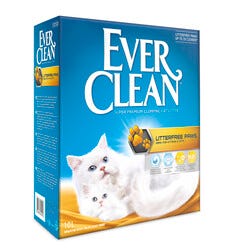
Conclusion: Best Flea Treatment for Cats
Fleas can make life miserable for cats and their owners. Itching and skin irritation leads to severe scratching, infections, hair loss, and anemia. Thankfully, several fast-acting and effective treatment options are available.
The key is using reliable, veterinarian-recommended products that kill fleas and ticks at all life stages. Excellent options like Frontline Plus and Nexgard provide safe, proven protection. Even natural sprays can help when used diligently. Your feline friend deserves the best flea treatment for cats to thrive happily.
While treating your cat is crucial, also take steps to eliminate fleas from your home. Thoroughly clean, vacuum, treat other pets and call an exterminator if needed. Stopping the problem at the source is the best long-term solution.
With the right combination of cat flea treatments, prevention habits, and home flea control, you can eliminate current infestations and keep these pesky parasites from returning. Do your research and take action to rid your cat – and home – of fleas once and for all. Your furry friend will thank you!

